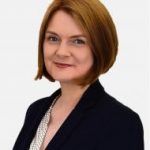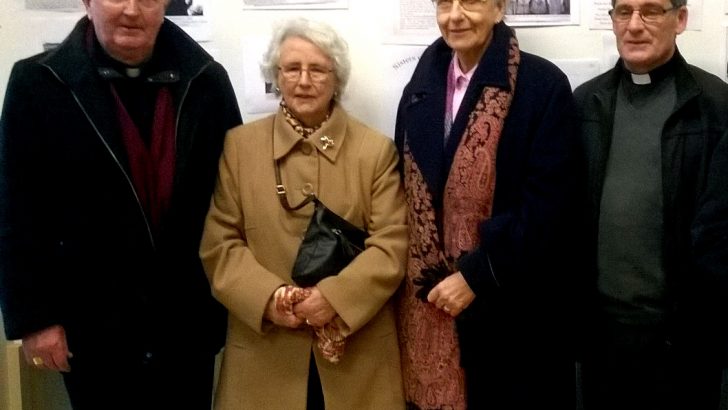Mags Gargan speaks to an Irish Sister of Mercy working among the voices and memories of Auschwitz
The Irish missionary spirit has an incredible scope of outreach, so it should really be of no surprise to learn that a Sister of Mercy from Dublin works and lives at the edge of the Nazi concentration camps of Auschwitz and Birkenau in Poland. Sr Mary O’Sullivan RSM has worked in the Centre for Dialogue and Prayer for seven years supporting English language groups visiting the museum, which ranges from visitors from Sweden to Japan, including survivors of Nagaski and Hiroshima.
The centre is a Catholic institution founded in 1992 by Cardinal Franciszek Macharski of Krakow in co-operation with the bishops of Europe as well as representatives of Jewish organisations. Its aim is to commemorate the victims of the Holocaust and to create a place for reflection, education, sharing and prayer for all those who are moved by what happened there.
“The mission of the centre is to contribute in a small way to peace and reconciliation,” Sr Mary says. “The range of groups is vast from community and parish-based to professors in university. We develop a programme that suits their group depending on their age and the length of their stay, usually between 3-5 days.”
She explains the centre’s programme has four dimensions which are all based on listening: to listen to the voice of the Earth, to listen to the voice of your heart, to listen to the voice of the other and to listen to the voice of God.
Survivors
“That means knowing the facts, so we usually start with a guided tour of the museum, usually Auschwitz I on the first day and Auschwitz II and Birkenau on the second day. If they wish to deepen that, we can have a workshop or a visit with the archives or a meeting with a member of our small network of survivors. These meetings are at the heart of our work. They connect us immediately to the human trauma of what happened and also open new paths of friendship,” she says. “For me the most profound part is the meeting with survivors and walking the ramp and railway lines through Birkenau.”
Nearly a million Jews were killed at the camp along with approximately 74,000 Poles, 21,000 Roma, 15,000 Soviet prisoners of war and at least 10,000 from other nationalities. More people died at Auschwitz than at any other Nazi concentration camp and probably than at any death camp in history.
It is now a very quiet place, where not even the wind breaks the silence of the memory of such sadness, pain and loss. Sr Mary says that the centre tries to create a space for reflection so that people have time to connect with the memory. “Everything begins with silence and listening, and knowing the facts,” she says.
“We don’t often have official dialogue events, but occasionally we do and for them and the little groups we have a simple guideline that everyone speaks about themselves and not about the other, and everyone listens. People come from different perspectives and some have family connections. It is still an open wound today, and we feel that if you touch an open wound there can be an emotional reaction, so it is better to empower the life around the wound, but this doesn’t mean to run away from it.”
Sometimes people reach for the question of ‘Where was God?’ but Sr Mary says there is also God’s question to us: Where were you? Where are you today? “In Auschwitz there are testimonies of faith and testimonies of people who lost their faith. We also encounter the painful history of Christian Jewish relationships and the question of responsibility. The challenge for us here is an examination of conscience on the one hand and confession of faith on the other. That some Christians and Jews could find ways to pray during those terrible years is a call to acknowledge that God was here, is here, and we can do nothing less than pray as well.”
Sr Mary comes from a teaching background in Dublin and it was her interest in Jewish/Christian studies that led her on the path to Auschwitz. In 2001 she applied for a summer programme in Jerusalem for religious educators to learn more about the Jewish faith and she was invited to stay on at the institute as the registrar. She spent four years living in Jerusalem and continued her studies part-time at two Jewish institutes.
Mutual friend
In 2008 two priests from the Centre for Dialogue and Prayer attended the International Conference of Jews and Christians in Jerusalem and made contact with Sr Mary through a mutual friend. She came to the centre at Oswiecim (the town where Auschwitz is based) in 2009 initially to work at a conference on Edith Stein and then became a full-time member of staff.
Sr Mary says that while it is difficult to live in a landscape where there was unimaginable death and cruelty, it has taught her the value of life.
“What I have learned is very humbling because I now know that I can be not only a victim but a perpetrator. When I walk into Auschwitz or Birkenau I ask myself, who would I have been? I know I could have been any one of the people. I could have closed my door. I could have been in the line. I could even have been one of those people who became part of the camp system without thinking,” she says.
“The survivors have taught me the importance of life. Their dignity and respect for life is so precious. It has taught me also that each day, in small ways I have to create the opposite of Auschwitz in my everyday relationships. It’s like choices. It brings up for me as well the whole confrontation with conscience. It is a very challenging place, but also a very profound place. I have met wonderful people, people who have had family members murdered here or people who had connections through the SS, and I have been deeply affected by their work towards reconciliation and peace. That is so positive and deeply moving,” Sr Mary says.
“At the root of it I feel for me as a Catholic and as a sister I would find it extremely difficult to walk here if I didn’t feel Jesus was holding my hand. This is a place of such darkness, that to be brought through this and know that I am not alone, is a very important part of my time here, and it has opened for me the enormity of the mercy of God, and perhaps there is nowhere as challenging to say that the mercy of God is actually here. It is like a daily pilgrimage in a sense.”


 Mags Gargan
Mags Gargan